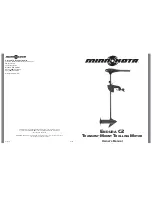
3-3
Chapter 3: Troubleshooting
3-2 Technical Support Procedures
Before contacting Technical Support, please take the following steps. Also, note that
as a motherboard manufacturer, Supermicro does not sell directly to end-users, so
it is best to first check with your distributor or reseller for troubleshooting services.
They should know of any possible problem(s) with the specific system configuration
that was sold to you.
Please go through the ‘Troubleshooting Procedures’ and 'Frequently Asked
4.
Question' (FAQ) sections in this chapter or see the FAQs on our web site
(http://www.supermicro.com/support/faqs/) before contacting Technical Sup-
port.
BIOS upgrades can be downloaded from our web site at http://www.supermi-
5.
cro.com/support/bios/.
If you still cannot resolve the problem, include the following information when
6.
contacting Supermicro for technical support:
Motherboard model and PCB revision number
•
BIOS release date/version (this can be seen on the initial display when your
•
system first boots up)
System configuration
•
An example of a Technical Support form is on our web site at http://www.
•
supermicro.com/support/contact.cfm/.
Distributors: For immediate assistance, please have your account number ready
when placing a call to our technical support department. We can be reached by
e-mail at [email protected] or by fax at: (408) 503-8000, option 2.
3-3 Frequently Asked Questions
Question: What are the various types of memory that my motherboard can
support?
Answer:
The X7DCA-L has six 240-pin DIMM slots that support DDR2 Registered
ECC 667/533 SDRAM modules. It is strongly recommended that you do not mix
memory modules of different speeds and sizes. (See Chapter 2 for detailed Infor-
mation.)
















































